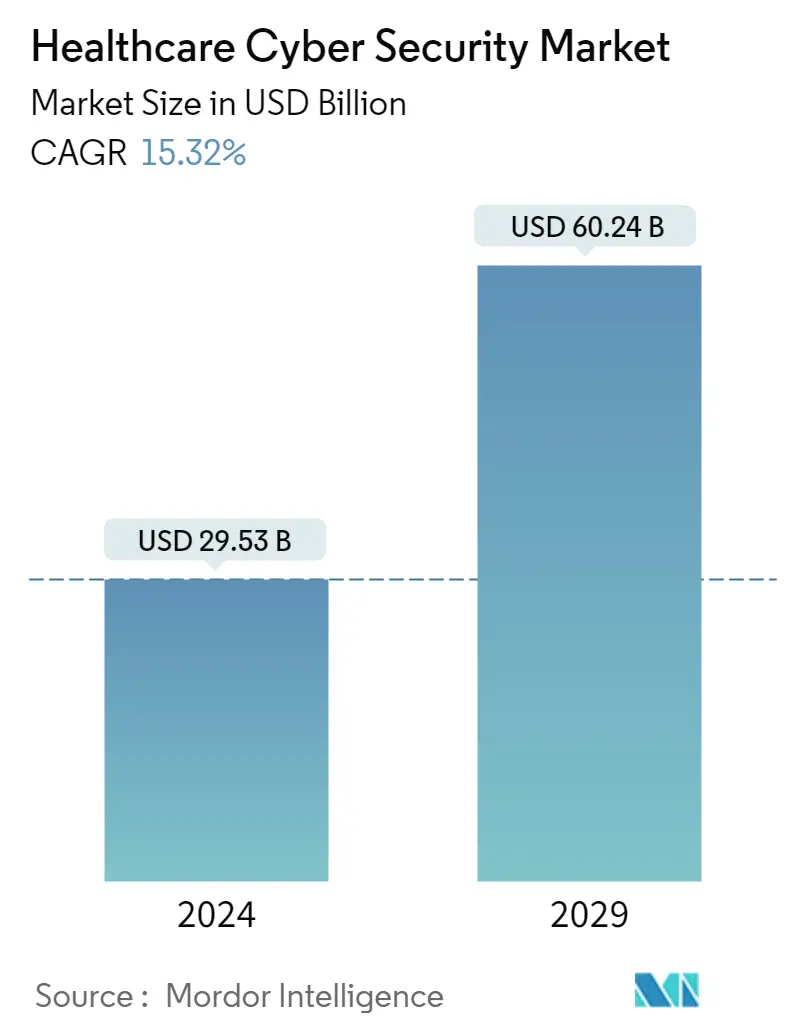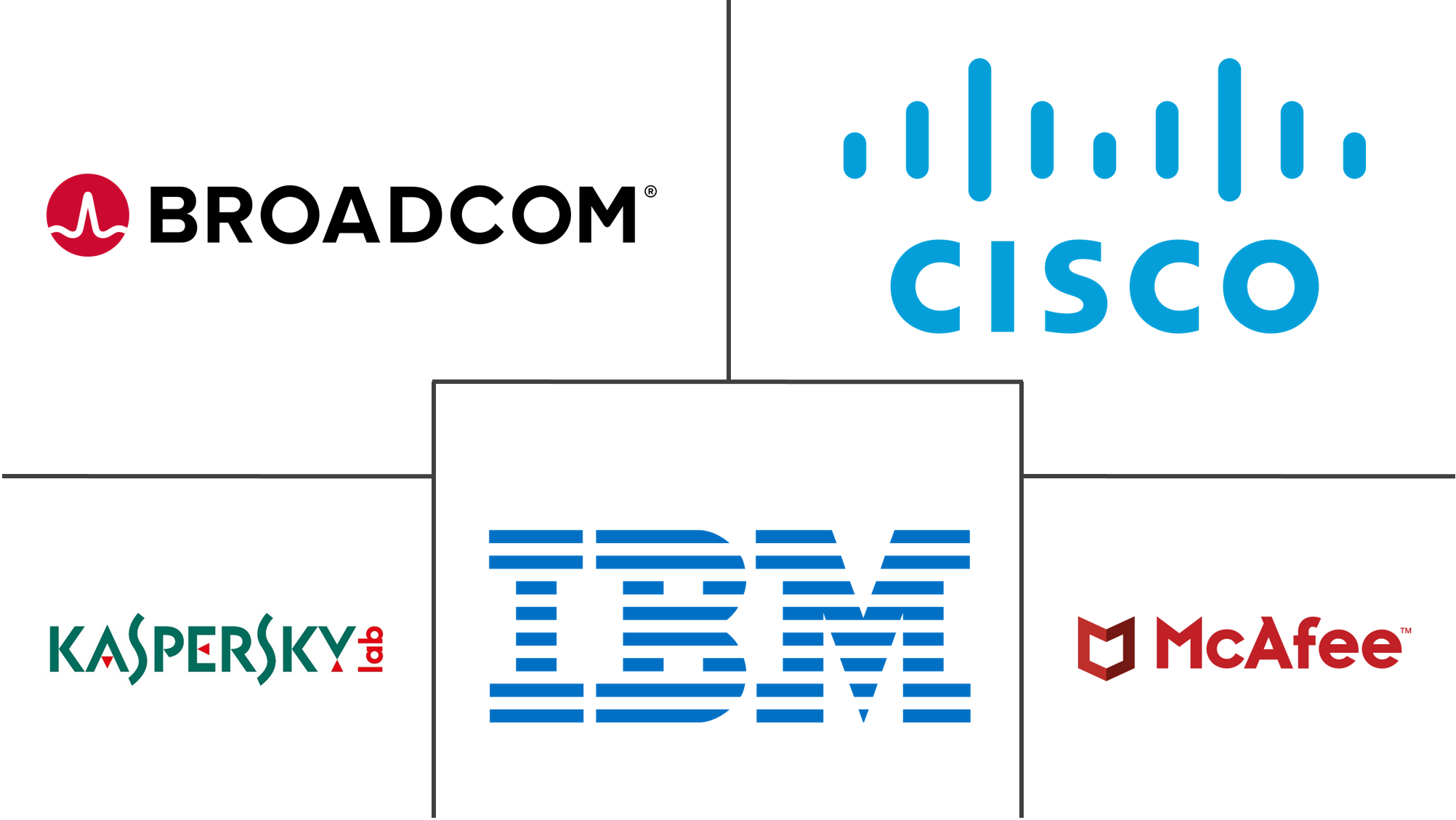Market Size of Healthcare Cyber Security Industry

| Study Period | 2019 - 2029 |
| Market Size (2024) | USD 29.53 Billion |
| Market Size (2029) | USD 60.24 Billion |
| CAGR (2024 - 2029) | 15.32 % |
| Fastest Growing Market | Asia Pacific |
| Largest Market | North America |
Major Players
*Disclaimer: Major Players sorted in no particular order |
Need a report that reflects how COVID-19 has impacted this market and its growth?
Healthcare Cybersecurity Market Analysis
The Healthcare Cyber Security Market size is estimated at USD 29.53 billion in 2024, and is expected to reach USD 60.24 billion by 2029, growing at a CAGR of 15.32% during the forecast period (2024-2029).
While cyber-attacks are the principal factor among the drivers of growth in the healthcare cybersecurity market, data breaches might be in the run. An increasing number of healthcare institutions are expected to use these cybersecurity solutions to protect patient data. Due to digital transformation, the healthcare industry is witnessing a shift in the operational process of information security.
- Cyber threats are expected to increase as connected technology becomes even more rooted in healthcare. So, this cyber threat is driving the market, along with other factors, such as increasing demand for cloud services and low penetration of information security systems in the healthcare sector. Smartphones are still the primary device for physician and patient communication. One of the primary reasons for healthcare mobile adoption is the standards and laws set by the US Centers for Medicare and Medicaid Services (CMS). Electronic health records are one of the prominent data sought by attackers.
- The latest developments in the healthcare sector, such as the Internet of Medical Things (IoMT) devices, not only opened the door for improved patient care but also increased potential threats. Embedded devices, such as pacemakers, threaten patient health by using radio or network technology. Moreover, the rise in patent infringement cases, business records, medical identity fraud, and loss of patient health records are expected to boost the healthcare cybersecurity market from 2015 to 2023. However, a lack of awareness about cybersecurity related to the healthcare industry would act as a restraining factor, thereby hampering the growth of the healthcare cybersecurity market.
- According to Cyber Peace Institute, over 10 million records have been stolen, including social security numbers, patient medical records, financial data, HIV test results, and the private details of medical donors. On average, around 155,000 records are breached during attacks on the sector, and this number can be far higher, with some incidents reporting a breach of over 3 million records. Further, Palo Alto Networks analyzed over 200,000 medical infusions pumped on networks of hospitals and other healthcare organizations and discovered that around 75% are affected by known vulnerabilities that attackers could exploit.
- The lack of a cyber security policy framework in healthcare organizations harmed the market. For businesses that adhere to national, industry, and international cybersecurity regulations, cybersecurity frameworks are frequently required or, at the very least, strongly encouraged. For example, a business must pass an audit attesting to its compliance with the Payment Card Industry Data Security Standards (PCI DSS) framework to handle credit card transactions.
- COVID-19 had a favorable effect on the healthcare cyber security market. Due to the pandemic, cyberattacks on clinical testing databases, digital healthcare platforms and apps, medical diagnostic systems, and advanced healthcare devices have escalated. Because of the heightened risk of a data breach and the rising frequency of cyberattacks in the healthcare sector, this spread increased the adoption of cyber security services and solutions. Over the course of the year, 92 ransomware attacks affected over 600 hospitals, clinics, and other healthcare organizations. In addition, the COVID-19 phishing epidemic further increased the need for cyber security in the healthcare sector.
